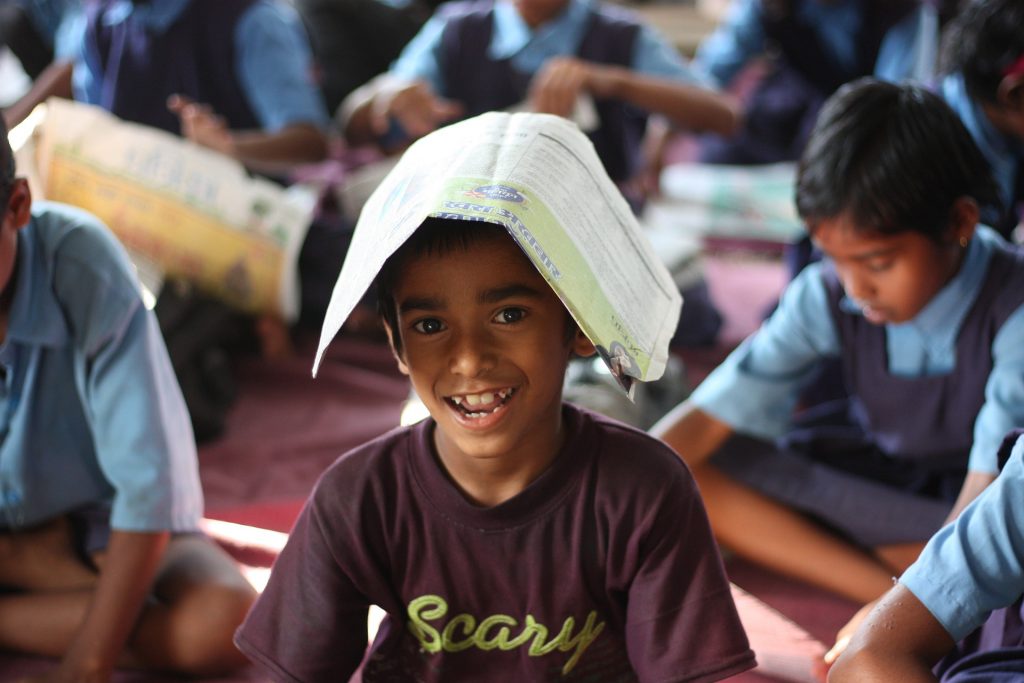4 min read
COVID-19 presents the most significant challenge to global education in a generation. Unprecedented numbers of children are suddenly without access to schooling, while governments are trying to recalibrate how they deliver educational services almost overnight, causing considerable anxiety and stress for children, parents, teachers, school leaders and policymakers.
We recognise, however, that the current situation is part of a broader trend towards an increasingly uncertain future, including the climate crisis, increased inequality and rapid technological changes. If the role of education is to prepare future generations to navigate through this world of ‘unknown unknowns’, we need to take this opportunity to reimagine our education systems to enable young people to thrive. At STiR Education, we think it’s time for a sea change.
If education is a journey, and each education system is a rowing boat with its crew working together to get to an end destination, then we think there are three key ingredients for policymakers to consider as we rebuild our systems:
What does it take to reach your destination?
All successful journeys need a clear destination – we don’t want to simply end up anywhere on the other side of the sea. Likewise, we seek to look beyond academic outcomes to build the foundations of lifelong learning in children.
We’ve identified six foundations of lifelong learning that correlate with strong outcomes for children. Our vision will be reached when every child is engaged, feels safe, loves learning, trusts and values their teacher, is curious and thinks critically. While we recognise that this is a long-term goal, we’ve developed a set of clear and observable indicators to help us to stay on course.
We also recognise that these behaviours will not develop in isolation, so, to this end, we have developed a corresponding set of behavioural indicators for teachers, school leaders and district education officials, and work to support them to achieve these outcomes.
How can we leverage intrinsic motivation?
The crew within the education system has to be motivated to put in the hard work required to get them to their destination. Although extrinsic factors like pay and working conditions are important, it’s intrinsic motivation that really drives us forward, and this is our key contribution to education systems. We understand intrinsic motivation to be based on three key pillars: building a sense of autonomy (that you can change something), mastery (that you can improve) and purpose (that you’re connected to something greater than yourself).
Every part of our model is designed with these three ‘inputs’ in mind. For example, we support teachers to develop their practice from models, success criteria and feedback (mastery), to question and contextualise examples (autonomy) and to build strong connections with peers (purpose). By understanding the progress that they are making, every member of the system is able to grow on this journey, which in turn helps them to make further progress.
How can we build an environment for trust?
Like the foundations of lifelong learning, intrinsic motivation does not develop in a vacuum. Meaningful relationships matter. We therefore need a crew in which every member not only understands their own critical role, but also trusts that everyone is pulling in the same direction. All crew members play a key role in ensuring that others have what they need to succeed so that this trust can develop.
Similarly, education systems must ensure conditions are in place for trusting relationships to develop, so that effective role-modelling between officials and school leaders, school leaders and teachers, and teachers and children can take place.
This is consistent with a wider body of evidence around the importance of managers in creating effective working conditions. For example, one study found that in places with higher workplace dissatisfaction, the time of day when workers are least happy is in the presence of their manager. The reverse also seems to be true in terms of the impact of a manager on employee behaviour: another study found when leaders show themselves to be self-sacrificing, employees are more likely to follow suit. Role-modelling seems to be crucial in the building of great culture, and we believe that role-modelling of the foundations of lifelong learning across an entire system will be central to their realisation.
Planning a successful voyage
We recognise that this metaphor is simplistic, and that the life chances of our young people depend on more than just education systems. We do believe, however, that these same education systems have the power to re-imagine how future generations can prepare themselves for an increasingly uncertain world.
At the end of the day, we need government support to scale these initiatives. Policymakers will need to do the following:
- Clarify outcomes. Governments must get specific in their visions for young people. Many are aligned in principle with the foundations of lifelong learning, but lack shared, detailed and observable definitions of what this means for children, teachers, school leaders and officials.
- Foster intrinsic motivation. Use the conceptual framework of autonomy, mastery and purpose as a basis for the design and delivery of professional development for those working in the system.
- Invest in relationships. Support everyone working in the system to understand their role in creating the right conditions for others to thrive as a core part of their professional identity.



















